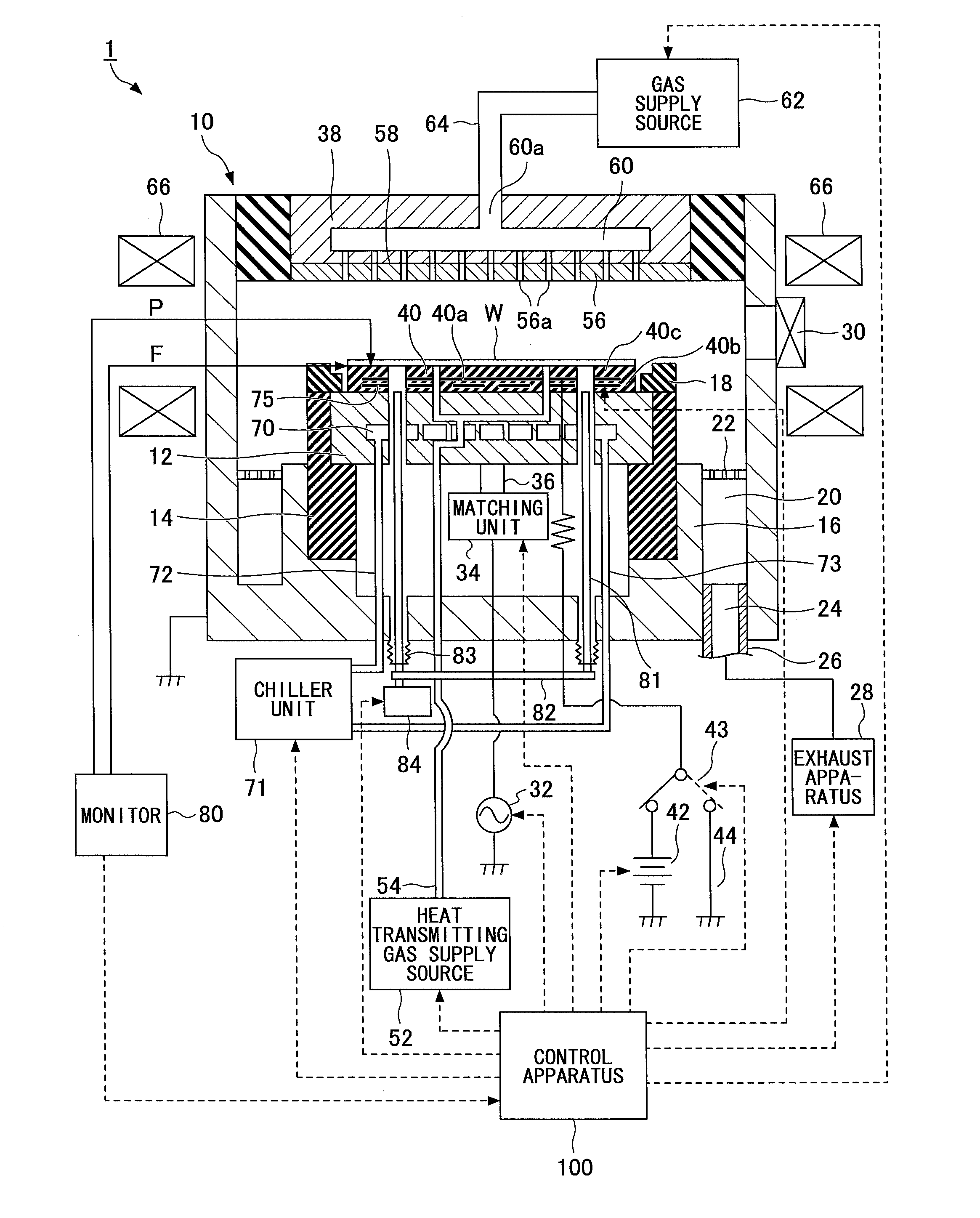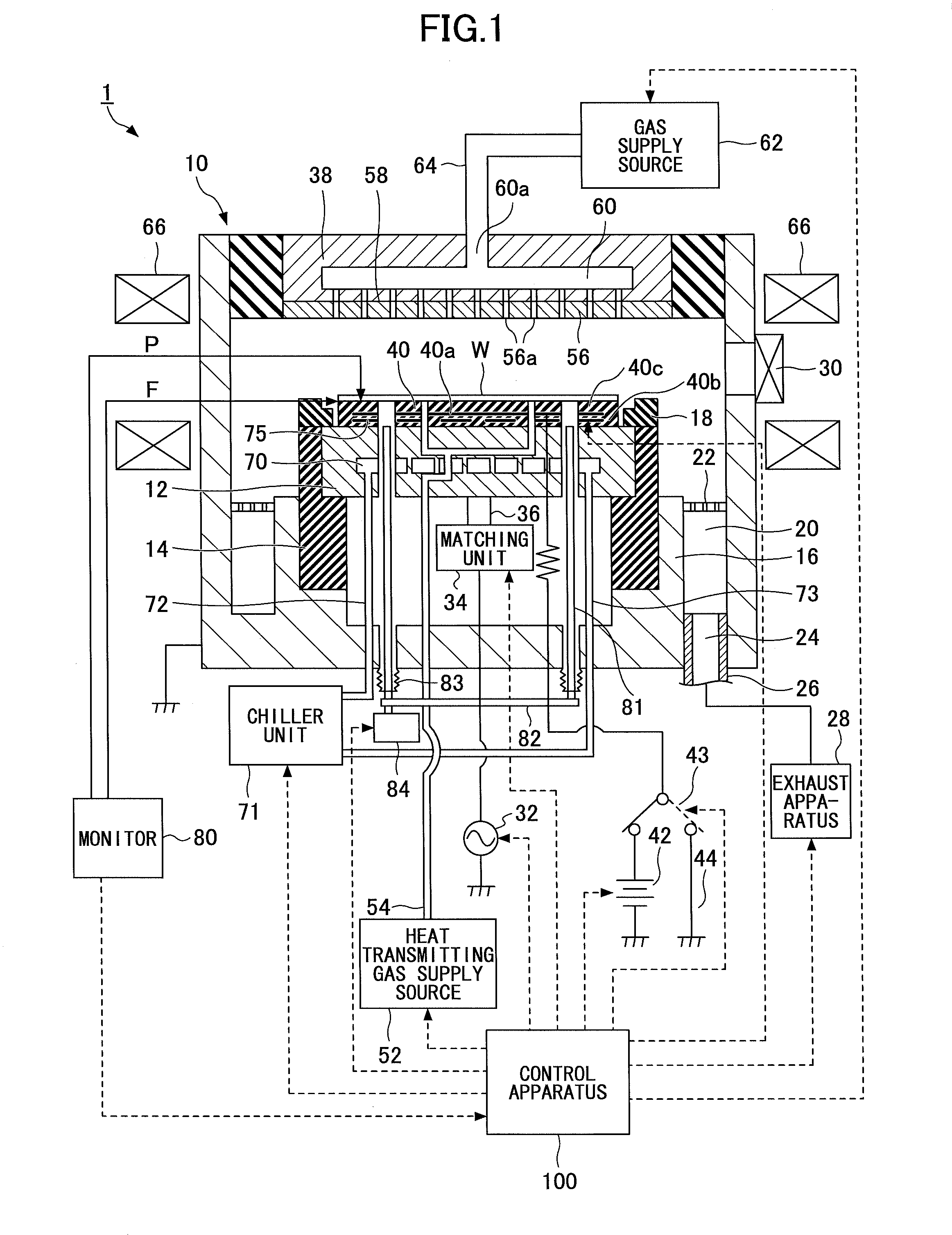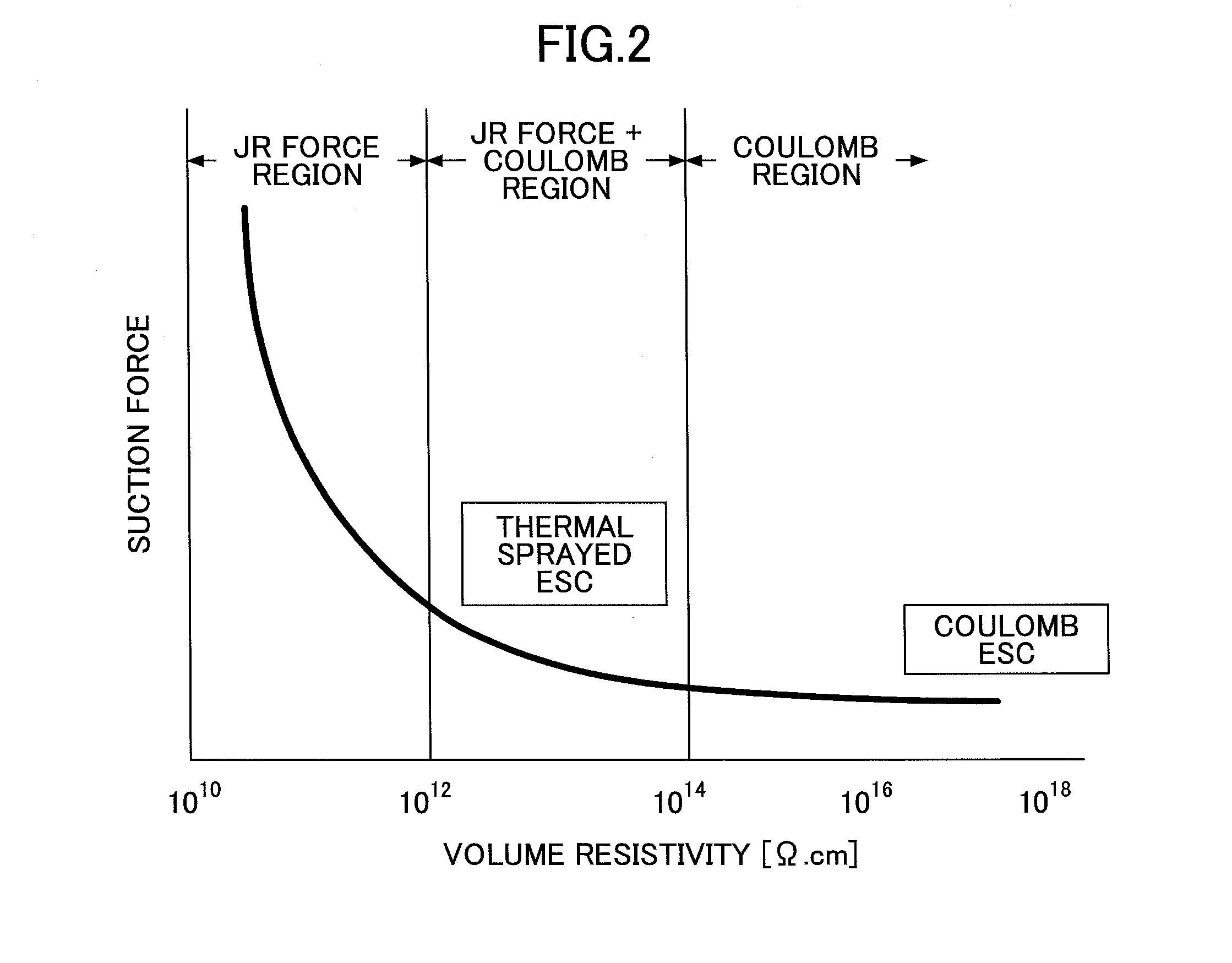Dechuck control method and plasma processing apparatus
a control method and plasma processing technology, applied in the direction of electrical apparatus, electrostatic holding devices, electric discharge tubes, etc., can solve the problems of residual electric charge not being discharged, processing objects may crack or be displaced, surface of electrostatic chuck change over tim
- Summary
- Abstract
- Description
- Claims
- Application Information
AI Technical Summary
Benefits of technology
Problems solved by technology
Method used
Image
Examples
first modification
[0137](First Modification)
[0138]In the dechuck control method according to the above modified embodiment, the He pressure of 2.6 Torr is determined to be the threshold value based on which a determination may be made as to whether the wafer W may be dechucked. FIG. 16 is a flowchart showing process steps for performing a suction monitoring process according to a first modified embodiment. The monitoring process of FIG. 16 is a modified embodiment of the suction monitoring process performed in step S110 of the dechuck control method shown in FIG. 7.
[0139]That is, the first modified embodiment of FIG. 16 relates to the suction monitoring process that is performed after the plasma process of steps S100-S106 and the discharge process of steps S107-S109 of FIG. 7.
[0140]The suction monitoring process according to the first modified embodiment is performed by the control unit 115. In FIG. 16, first, He gas is supplied to the rear face of the wafer W (S300). Then, after the pressure at the ...
second modification
[0151](Second Modification)
[0152]In the following, a suction monitoring process according to a second modified embodiment is described. FIG. 19 is a flowchart showing process steps for executing the suction monitoring process according to the second modified embodiment. The suction monitoring process of FIG. 19 is another modification of the suction monitoring process performed in step S110 of the dechuck control method of FIG. 7.
second modified embodiment
[0153]FIG. 19 differs from the first modified embodiment of FIG. 16 in that it includes step S310. That is, in the second modified embodiment, when the He pressure of the edge region detected one second after stopping the He gas supply is greater than the He pressure alarm threshold value 2.6 Torr, the control unit 115 does not immediately terminate the wafer W dechuck process but proceeds to step S310 where the control unit 115 determines whether the suction monitoring process steps (i.e., steps S300-S302) have been performed at least a predetermined number of times. If it is determined that the monitoring process steps have not been performed the predetermined number of times, the process goes back to step S300 so that the suction monitoring steps S300-S302 may be repeated. That is, the He gas is supplied again for six seconds after which the He gas supply is stopped and the pressure at the edge region of the wafer W rear face is detected one second after stopping the He gas suppl...
PUM
| Property | Measurement | Unit |
|---|---|---|
| Fraction | aaaaa | aaaaa |
| Time | aaaaa | aaaaa |
| Pressure | aaaaa | aaaaa |
Abstract
Description
Claims
Application Information
 Login to View More
Login to View More - R&D
- Intellectual Property
- Life Sciences
- Materials
- Tech Scout
- Unparalleled Data Quality
- Higher Quality Content
- 60% Fewer Hallucinations
Browse by: Latest US Patents, China's latest patents, Technical Efficacy Thesaurus, Application Domain, Technology Topic, Popular Technical Reports.
© 2025 PatSnap. All rights reserved.Legal|Privacy policy|Modern Slavery Act Transparency Statement|Sitemap|About US| Contact US: help@patsnap.com



